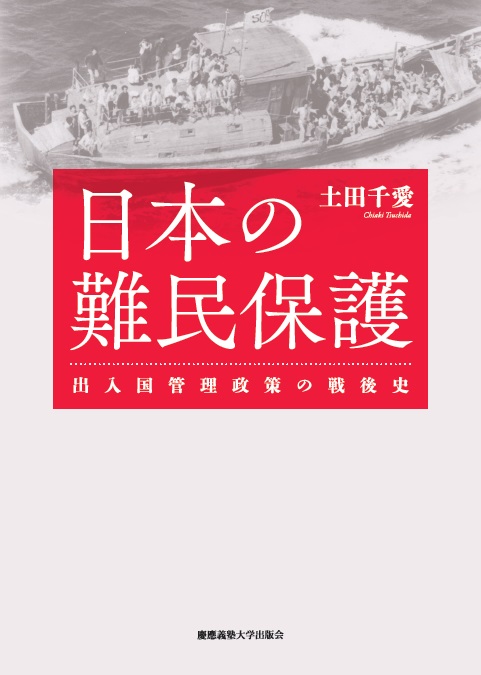
Title
Nihon no Nanmin Hogo (Refugee Protection in Japan - Postwar History of the Immigration Control Policy)
Size
256 pages, A5 format, hardcover
Language
Japanese
Released
January 30, 2024
ISBN
978-4-7664-2938-1
Published by
Keio University Press
Book Info
See Book Availability at Library
Japanese Page
This is the first political science book on refugee studies published in Japan which analyzes refugee protection in the post-WWII period.
The rate of refugee recognition in Japan has been lower compared with that of Western countries over the past four decades. Hence, there is a widely held belief assertion that Japan adopts a closed-door approach to refugee acceptance. This begs the question as to why Japan has a refugee policy. In the field of refugee studies, the reason why nation states contribute to the protection of refugees has never been properly clarified. Thus, this book tries to provide an answer with a case study of Japan. For this purpose, this book addresses a long-term period which covers the entire postwar period in order to diachronically trace the Japanese government’s decision-making process regarding refugee protection. Additionally, it attempts to clarify the features of the establishment of the refugee policy in postwar Japan and reexamine what previous research has pointed out, namely from the perspective of a “reactive state” or “isolationism”. Furthermore, this book seeks to provide an academic implication for immigration and refugee studies (which have developed mainly in Europe) in a Japanese context.
In Japan, some scholars of law, as well as practitioners in immigration control and support (especially lawyers), have been criticizing the government’s unwillingness to accept refugees. They emphasize that Japan’s refugee policy has been developed in response to external pressures from Western countries, especially the United States. They have also been searching for an ideal way to protect refugees from the perspective of international human rights law. However, while legal interpretation and policy evaluation has been actively pursued, how the Japanese government regards refugee protection and how its intentions have been reflected in its policy measures have not been sufficiently clarified. This is partly because political science in the field of refugee studies is still under development, despite significant contributions having been made by scholars of law. Therefore, this book aims to contribute to the development of political science in refugee studies. Furthermore, a number of political scientists in immigration studies have debated whether the international human rights norms restrict the sovereignty of states or not. Thus, this book contributes to the discussion from the perspective of refugee protection in Japan because there are few contributions from the Japanese context.
Chapter 1 outlines major problems in previous immigration and refugee studies, and introduces a research question. Chapter 2 to Chapter 5 are divided into major turning points for Japan’s refugee policy. This study clarifies how Japan has strategically shifted its refugee policy every time its external reputation and diplomatic interests are at stake. It also indicates that the Japanese government has avoided significant policy changes and has gradually reflected the international human rights norms into domestic law. Moreover, this book points out that the government has actively made the refugee policy in the post-WWII period from one point of view.
Lastly, the book provides some recommendations for improving the decision-making process of Japan’s refugee protection. First, the Japanese government should establish an expert committee on refugee protection which convenes annually at the Immigration Services Agency. Second, they should introduce a policy evaluation system on refugee protection in order to enhance their autonomy on decision-making.
Overall, this is a volume that could serve as a bridge between theory and practice in refugee protection.
(Written by: TSUCHIDA Chiaki / May 22, 2024)
Related Info
Yoshino Sakuzo Research Award Grand Prize (Yoshino Sakuzo Research Award 2024)
https://www.yoshinosakuzou.info/blank-21
The Japan Society for International Development Encouragement Award (The Japan Society for International Development 2024)
https://jasid.org/nl/nl-vol36-no1-133/nl-36-1-awards/
The 4th UTokyo Jiritsu Award for Early Career Academics (The University of Tokyo 2023)
https://www.u-tokyo.ac.jp/ja/research/systems-data/n03_kankojosei.html




 eBook
eBook